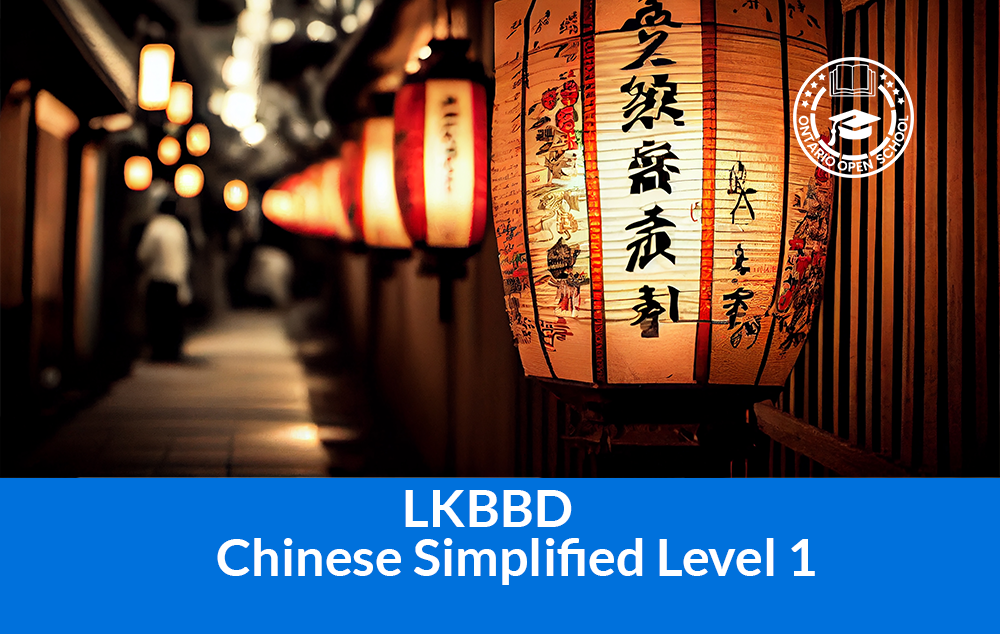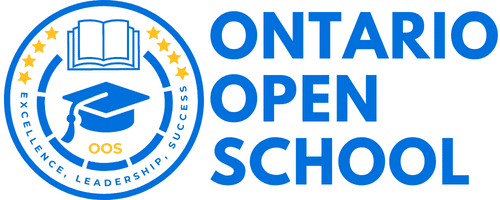- info@ontarioopenschool.com
- 647-494-4499
-
Unit 100 - 29 Gervais Drive, North York, ON.
M3C 1Y9
Copyright 2024 Ontario Open School Inc. All Rights Reserved.
This course provides opportunities for students to begin to develop and apply skills in listening, speaking, reading, and writing in the language of study. Students will communicate and interact in structured activities, with a focus on matters of personal interest and familiar topics, and will read and write simple texts in the language. Throughout the course, students will acquire an understanding and appreciation of diverse communities in regions of the world where the language is spoken. They will also develop skills necessary for lifelong language learning.
Unit Order | Unit Name | Suggested Time |
|---|---|---|
| Unit 1 | Introduction to Chinese Language: In this unit, students will gain a basic but important understanding of the Chinese language. What are the unique qualities of Chinese language? What is the difference between the two commonly used terms, “Mandarin” and “Chinese”? How to read Chinese phonetic system and learn to pronounce Chinese? What are the tones of Mandarin pronunciation? How to write Chinese characters? In this unit, a few sound files along with several online resources will help you build a solid foundation to start your learning.
| 25 hours |
| Unit 2 | Communicating By the end of this unit, students will:
| 25 hours |
| Unit 3 | Short Stories By the end of this Unit, Students will: a-study different culture and food in various cities in China b. Demonstrate an understanding of the structure and elements of several short stories
| 25 hours |
| Unit 4 | Understanding Cultural and Society By the end of this unit, students will:
| 25 hours |
| Final Evaluation 30% | Culminating Assignment Final Exam | 8 hours 2 hours |
| Total | 110 Hours |
A wide variety of instructional strategies are used to provide learning opportunities to accommodate a variety of learning styles, interests and ability levels. These strategies include but are not limited to:
|
Strategies marked with “x” are used in the course. |
|||
|
Direct Instruction (teacher-led) |
X | Class Activity (teacher facilitation) | X |
| Direct Instruction (discussion possible) | X | Experiential learning (learn by doing) |
X |
|
Class Discussion (teacher facilitated) |
X | Worksheets/Surveys | X |
| Small Group Discussion | X | Individual or Group Research |
X |
|
Partner Discussion/Conferencing |
X | Teacher modeling | X |
| 1:1 Conferencing Teacher & Student | X | Text-based modeling |
|
|
Teacher reading to class |
X | Use of Computers / Internet | X |
| Silent individual reading | X | Use of video tape or audio materials |
X |
|
Group based reading |
X | Role Playing | X |
| Independent Work (teacher facilitation) | X | Presentations |
X |
|
Group Work (teacher facilitation) |
X | Guest Speaker / Interviews / Questions | |
| Brainstorming | X | Field Trip |
|
Purpose
The primary purpose of assessment is to improve student learning. Assessment relates directly to the expectations for the course.
A variety of assessments for and as learning are conducted on a regular basis to allow ample opportunities for students to improve and ultimately demonstrate their full range of learning and for the teacher to gather information to provide feedback. Assessment tasks relate to the success criteria set out in lesson plans. Success criteria allow students to see what quality looks like.
Evaluation is the process of judging the quality of student work in relation to the achievement chart categories and criteria and assigning a percentage grade to represent that quality. Evaluation is based on gathering evidence of student achievement through:
Assessment for Learning – we provide feedback and coaching. Assessment FOR Learning is the process of seeking and interpreting evidence for the use of learners and their teachers to decide where the learners are in their learning, where they need to go, and how best to go there.
Assessment as Learning – we help students monitor progress, set goals, reflect on their learning
Assessment AS Learning is the process of the explicit fostering of students’ capacity over time to be their own best assessors, but teachers need to start by presenting and modeling external, structured opportunities for students to assess themselves.
Assessment of Learning – we use assessments to provide evaluative statements about student achievement. Assessment OF Learning is the assessment that becomes public and results in statements of symbols
(marks/grades/levels of achievement) about how well students are learning. It often contributes to pivotal decisions that will affect students’ future.
ASSESSMENT TOOLS
Assessment Tools
|
Assessment tools marked with “x” are used in the course. |
|||
| Marking schemes | X | Rubrics |
X |
|
Anecdotal comments |
X | Checklists | X |
| Rating Scales |
|
||
Assessment Strategies
|
Assessment for Learning |
Assessment as Learning | Assessment of Learning | |||
| Quizzes | Journal/Reflections | X | Tests |
X |
|
|
Tests |
Exit and Entrance Cards | Presentations | X | ||
| Presentations | KWL Chart | Journals |
|
||
|
Journals |
X | Self/Peer assessment | X | Essays | X |
| Essays | Logs | Models |
|
||
|
Models |
Projects | X | |||
| Projects | X | Demonstrations |
|
||
|
Demonstrations |
Conferencing | ||||
| Conferencing | X | Questioning |
X |
||
|
Questioning |
Independent Study Assignment | X | |||
| Independent Study Assignment | X | Art Exhibits |
X |
||
|
Art Exhibits |
Researching | ||||
| Researching | X | Reading Aloud |
|
||
|
Reading Aloud |
Problem Solving (process focused) | ||||
| Problem Solving (process focused) | X | Debates |
X |
||
|
Debates |
Work Sheets | ||||
| Work Sheets | X | Role Playing |
|
||
|
Role Playing |
Direct Instruction | ||||
| Direct Instruction | X |
|
|||
Resources
Grading
Weighting of categories
| Knowledge/Understanding | Thinking/Inquiry | Communication | Application |
| 25% | 25% | 25% | 25% |

Course Grade | Grade 10 |
|---|---|
Course Code | LKBBD |
Course Category | International Language |
Course Type | Academic |
Course Delivery | Online |
Course Duration | 110h |
Course Credit | 1.00 |
Copyright 2024 Ontario Open School Inc. All Rights Reserved.
